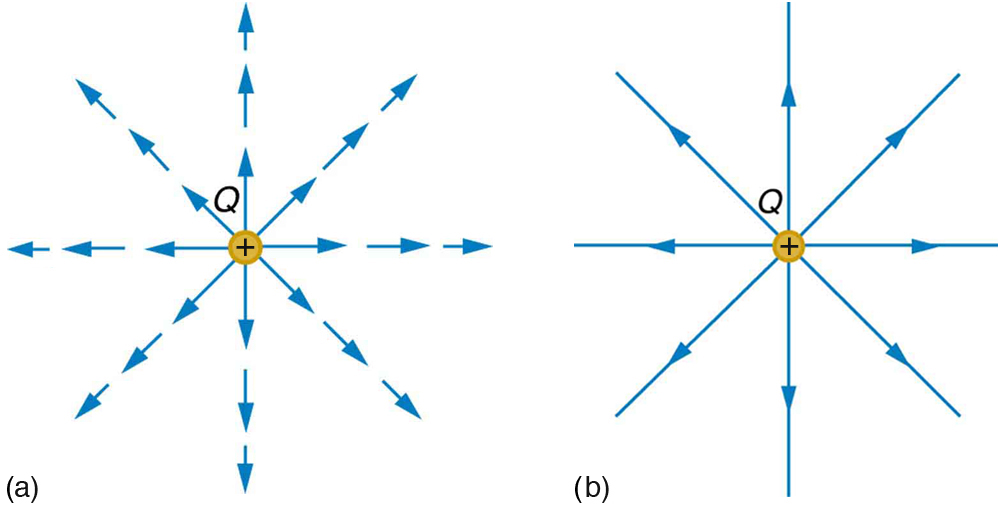AP Physics 2: Review Guide
1/33
There's no tags or description
Looks like no tags are added yet.
Name | Mastery | Learn | Test | Matching | Spaced |
|---|
No study sessions yet.
34 Terms
Electric Field acts as a property of…
space (FE/q) points in the direction a positive charge would feel force (outwards) and a negative charge would feel force (inwards)
More dense field lines indicate
stronger electric field
E-field VECTORS are
TANGENT to the electric field

Force/Fields from MULTIPLE point charges
Vector Addition
kq1/r + kq2/r …
Equipotential
Set of adjacent locations where Voltage is constant, perpendicular with E-fields and points towards decreasing V
E = V/r
ONLY works if r is with or against the field
OTHERWISE SUBDIVIDE INTO COMPONENTS Ex = Vx/r, Ey = Vy/r
Energy Conservation from a point charge
If a charge can freely move when only acted on by electric forces from other charges, energy is conserved
K = -U = -qv
Capacitance depends on…
Geometry, not charge or voltage
K is ——
Kappa, dimensionless with no units
Prescence of a dielectric REDUCES the electric field within the material by POLARIZING the atoms
ALSO increases capacitance
Permittivity
a measure of how a material responds to the external electric field
(the material is polarized and reduces the E in the material)
POLAR, free- electron molecules have larger k and e
Keep a capacitor connected to a battery
CONSTANT V
Disconnect battery from capacitor
Q is constant
IDEALLY, Capacitors have a…
uniform electric field
Electric field charge is….
The charge of our point
Voltage is NOT…
a vector, at every point in space around a charge
+charge WILL always make a …
-charge WILL always make a…
+V
-V
PE =
QV
Electric Field Lines always point towards
lower potential
qV =
1/2mv², can use this to find speed
work is zero over a
CLOSED PATH
If it mentions, gravity and work…
Use mgY, qEy (F = qE substitution)
Work is PATH INDEPENDENT
only depends on the starting and ending position, NOT path between
KE and UE are conserved AND
unable to change energy of ENTIRE system
-, +
high potentials, lower potentials
V in a conductor
V = 0 over any path within the conductor, V is CONSTANT at all points in a conductor when charges are in equilibrium
+Q
-q
hill
well
E-field strength always point towards
decreasing potential
using an equipotential map
use the distance between the equipotential lines and the highest voltage
Energy field into vectors of x and y
E = V/x, split 90 into 30 if possible (from other angle information)
Can use electron volts to make
math easier, if 1/base charge, should instead be numerically EV
Have velocity from plates
qV = 1/2mv²
E = V/R, V = Ex
Formulas NOT on the sheet
½ CV², ½ Q²/2C, 1/2 QV
Switch problem
electrons flow out of/away from positive terminal
Q/e = n to FIND electrons that flow
WILL BE GIVEN C,V